Using ChatGPT to ask simple questions, generate a report, and perform regular tasks is one thing; using deep research to gain powerful insights is something everyone must learn to perform complex tasks.
Deep Research is basically a smarter way to dig into a topic without spending days hopping between tabs or paying someone to do it for you. It uses AI to pull information from verified sources, cross-check it, and turn it into a clear report with proper citations. Once you know how to use it, you can get thorough, reliable answers in a fraction of the time and save a lot of money along the way.
In this tutorial, you’ll learn how to access deep research in ChatGPT, write a detailed prompt describing the research, submit the research request, and review and download your report. In addition, we’ll also show you some cool use cases beyond marketing and/or strategy. So buckle up, folks, it’s going to be an exciting ride.
By the end of this tutorial, you’ll be able to:
- Access deep research in ChatGPT
- Describe your research in detail
- Review, iterate, and download the report/s
- Advanced use cases of deep research
So what are you waiting for? Let’s dive right into it!
Step 1 - Access deep research in ChatGPT
Deep research is not a standard AI chat service. It’s basically an AI agent that browses the web for 5 to 30 minutes, analyzes dozens of pages, and produces structured results with reference-backed insights.
So, what you need to do is access ChatGPT. Log in to your usual account (preferably a paid one) and start a new chat.
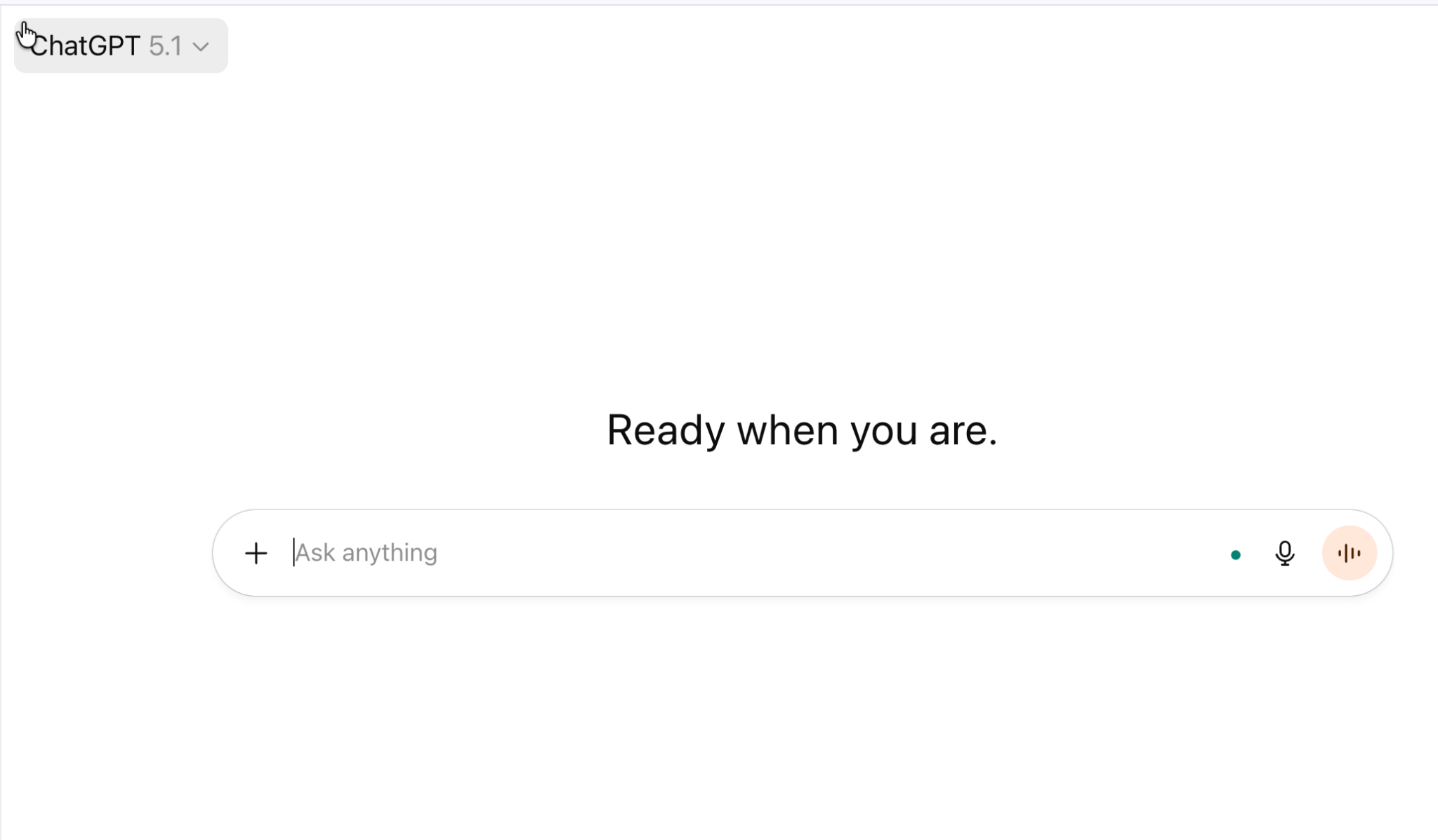
Make sure you have selected the ChatGPT 5.1 model for more focused results.
Click the plus icon (+) in the chatbox and select ‘Deep Research.’
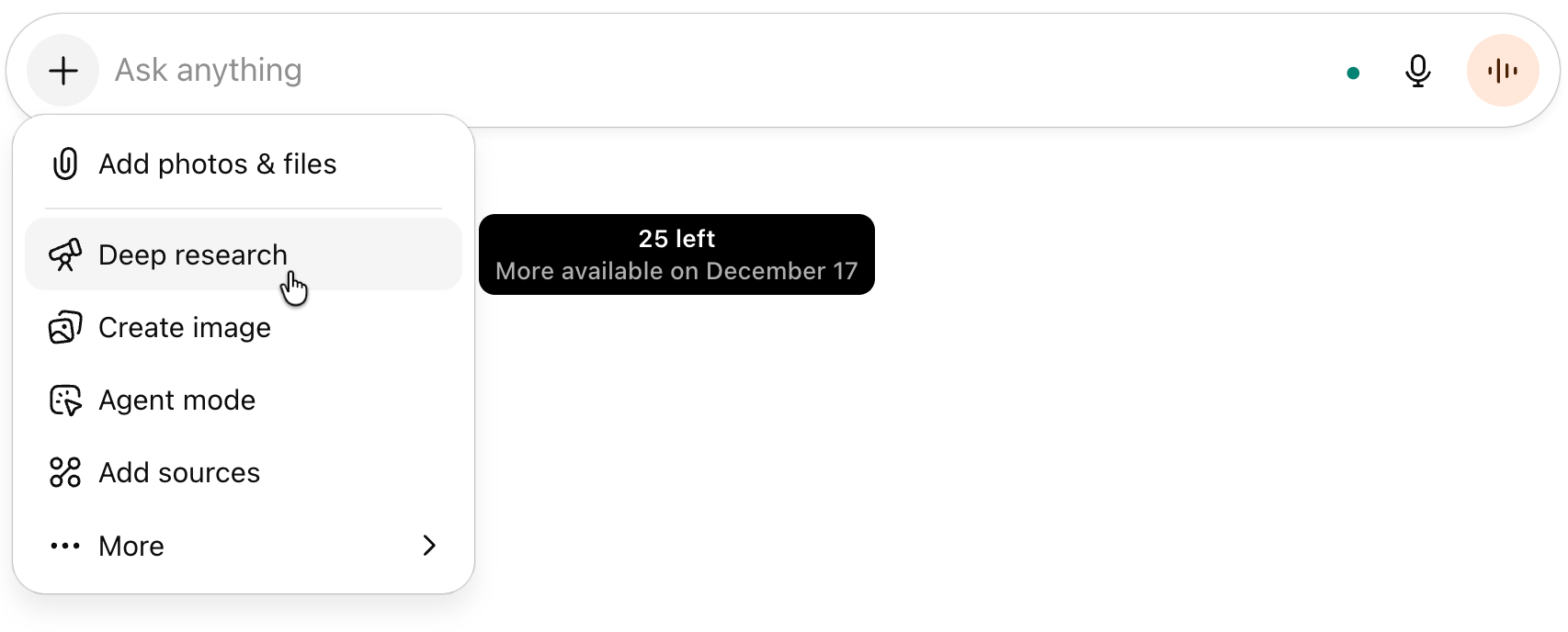
This feature turns on an autonomous agent inside ChatGPT that handles full multi-step research for you. It scans many sources, compares information, and delivers a detailed report with proper citations. Since this kind of deep digging is expensive for AI companies to run, how much you can use it depends on your subscription tier.
Most top AI tools, such as ChatGPT, Perplexity, and Grok, now offer their own version of this. Right now, ChatGPT’s Deep Research is ahead, scoring the highest on the Humanity’s Last Exam benchmark for reasoning quality and factual depth.
Here’s how it differs from a normal web search:
- A regular search gives you quick summaries from a few pages.
- Deep Research works through several stages, reads far more material, verifies the information, and builds a structured report you can trust.
Step 2 -Describe your research in detail
Let’s get down to business. First, you must figure out the details for the research. What exactly do you want to research deeply? Clearly describe your goal. The idea is to provide as much context as possible for a better report.
Let’s say you want to conduct market research on the robot vacuum market. Use the following prompt for your marketing use case:
I am starting a robot vacuum company making humanoids that specialize in doing household cleaning. Conduct comprehensive market research into this niche and identify who our ICP is, identify all the keywords and pain points they use that we can target in our marketing. Analyze our competitors and set a clear strategy for distribution. Base it on the best practices of companies in this niche.
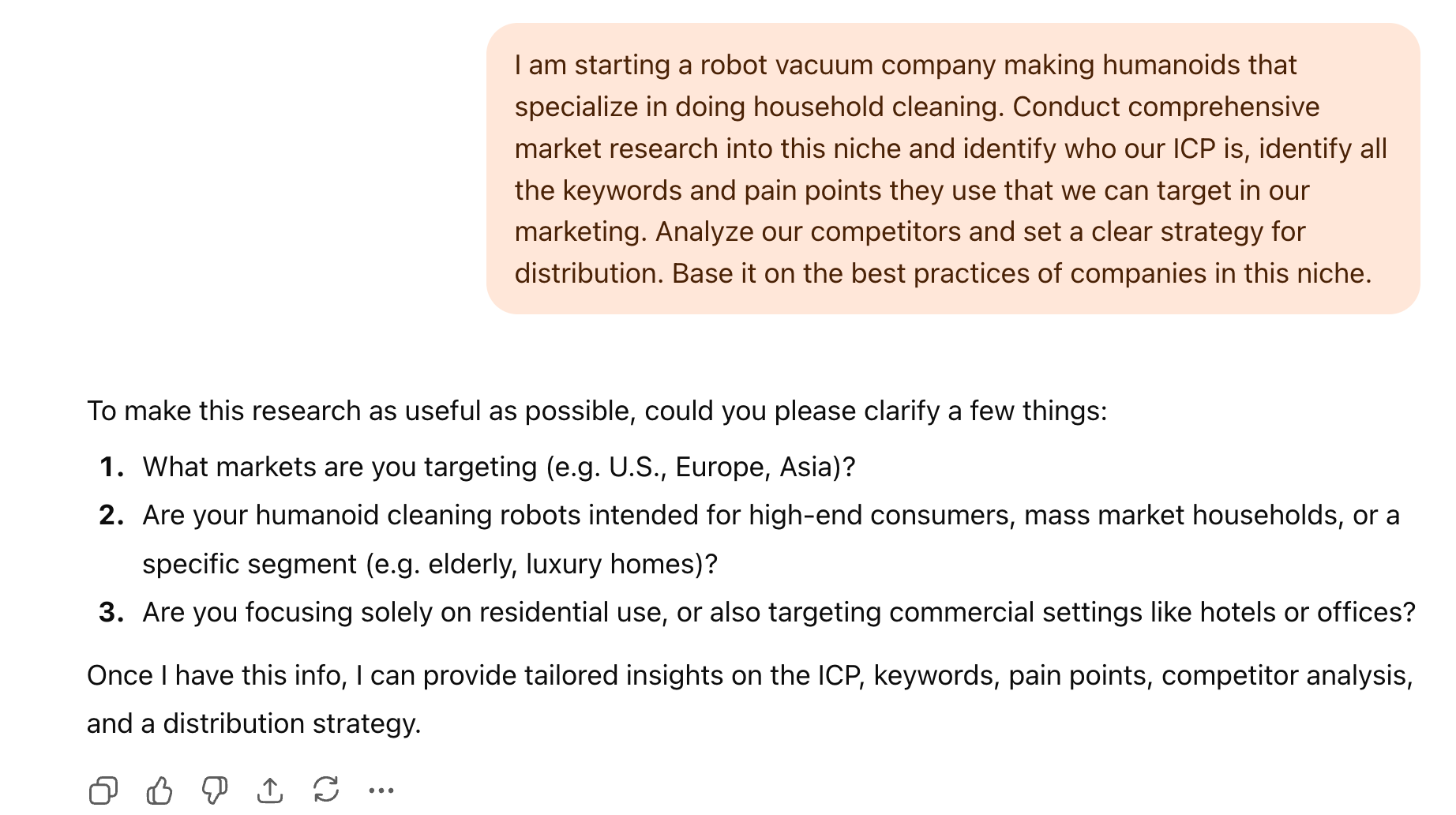
Now, deep research will ask clarifying questions such as region, price range, product scope, and audience type. These questions ensure accuracy before it starts. Provide detailed answers to the questions to start the research.
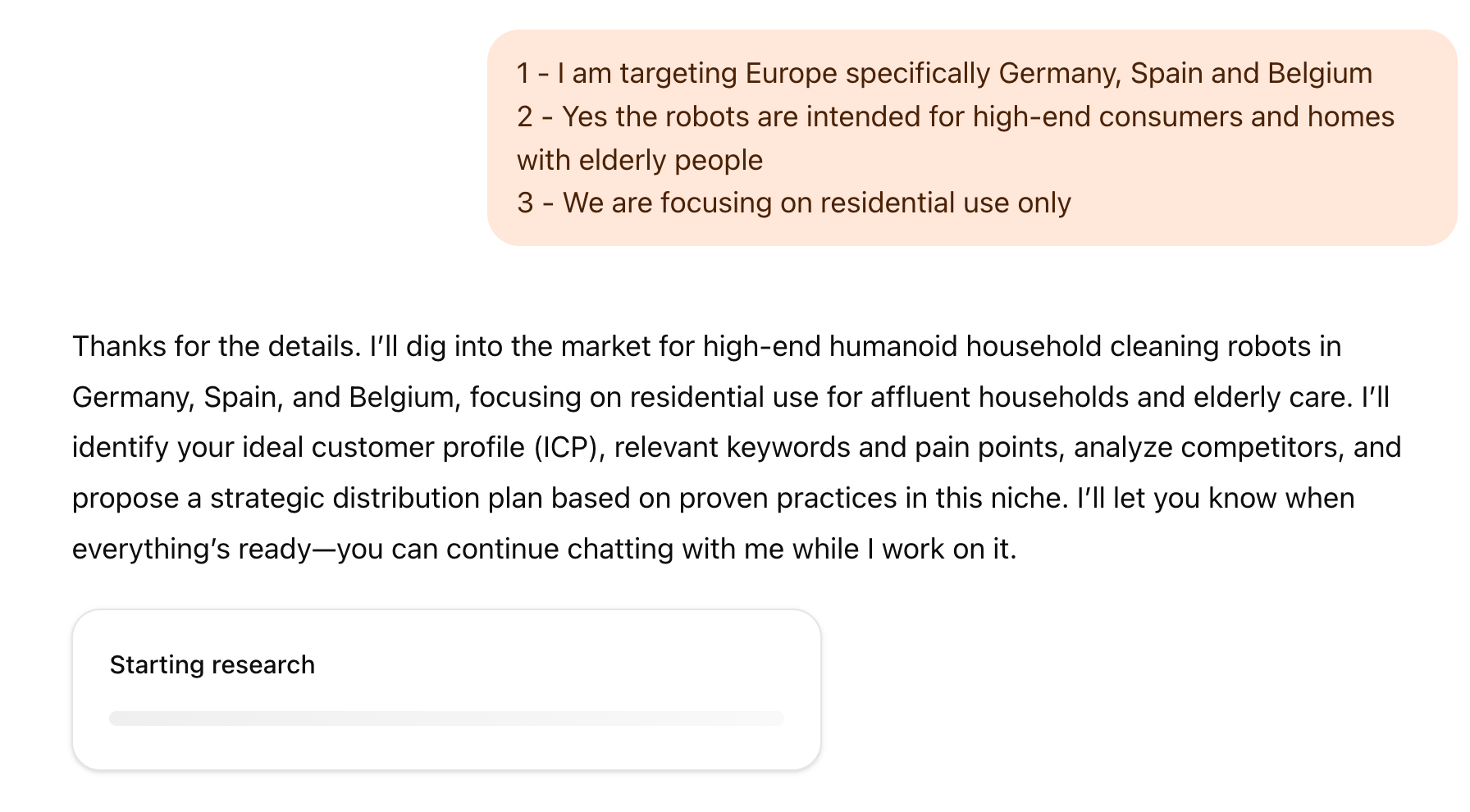
Deep research will take time to gather the resources on the web and create a detailed report. Once it’s ready, you can view it in the preview pane.
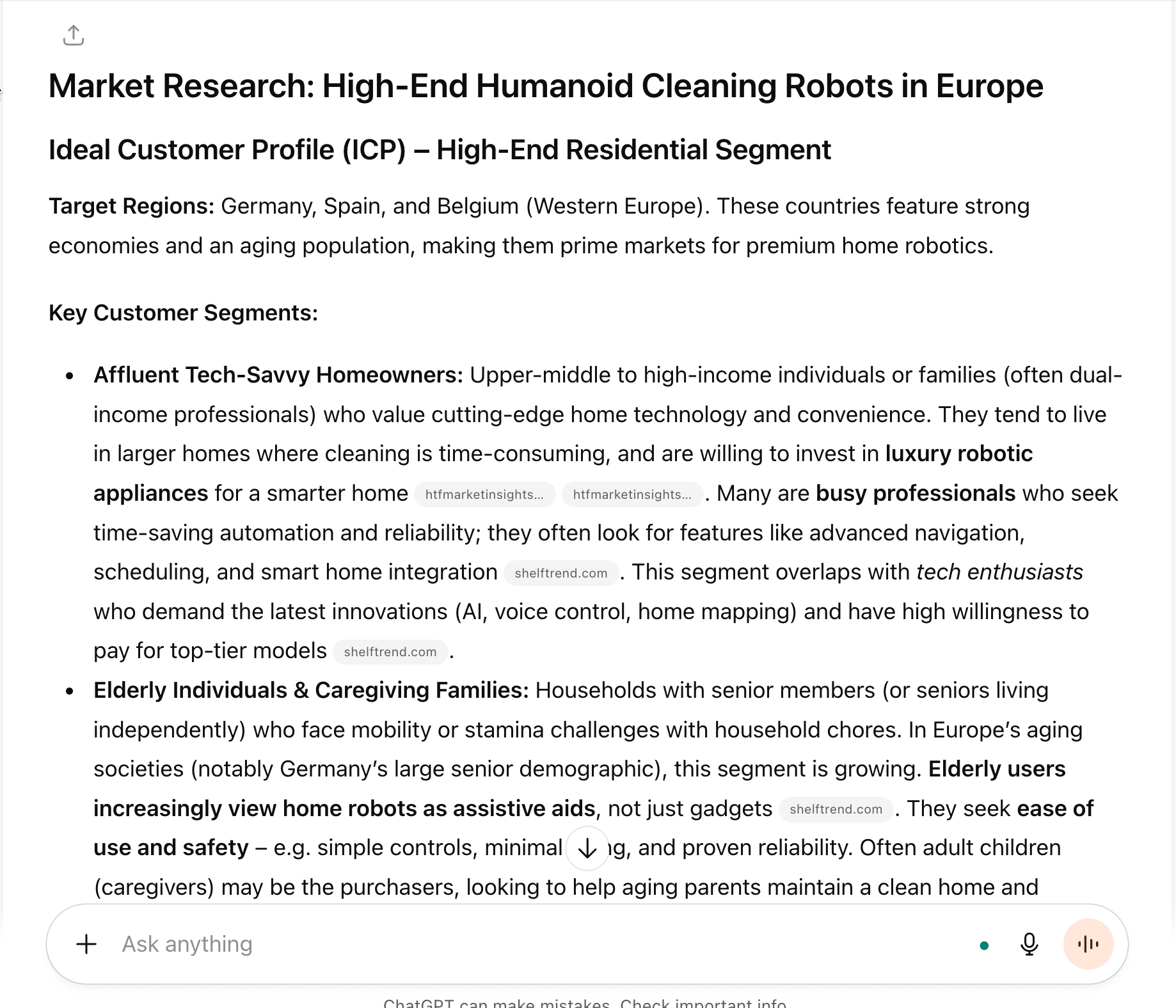
Note: While Deep Research is working in the background, you can move on to other things or even start extra research threads. The model will ping you as soon as your report is ready.
Step 3 - Review, iterate, and download the report
Review the report and check the sources at the end of the report. If you are unsatisfied with the report, instruct the Deep Research to add or delete sections in the report.
Let’s say you want to add a comparison table for competitive trends. You can write a prompt in the following way:
Prompt:
Add a comparison table for competitive trends in the report.
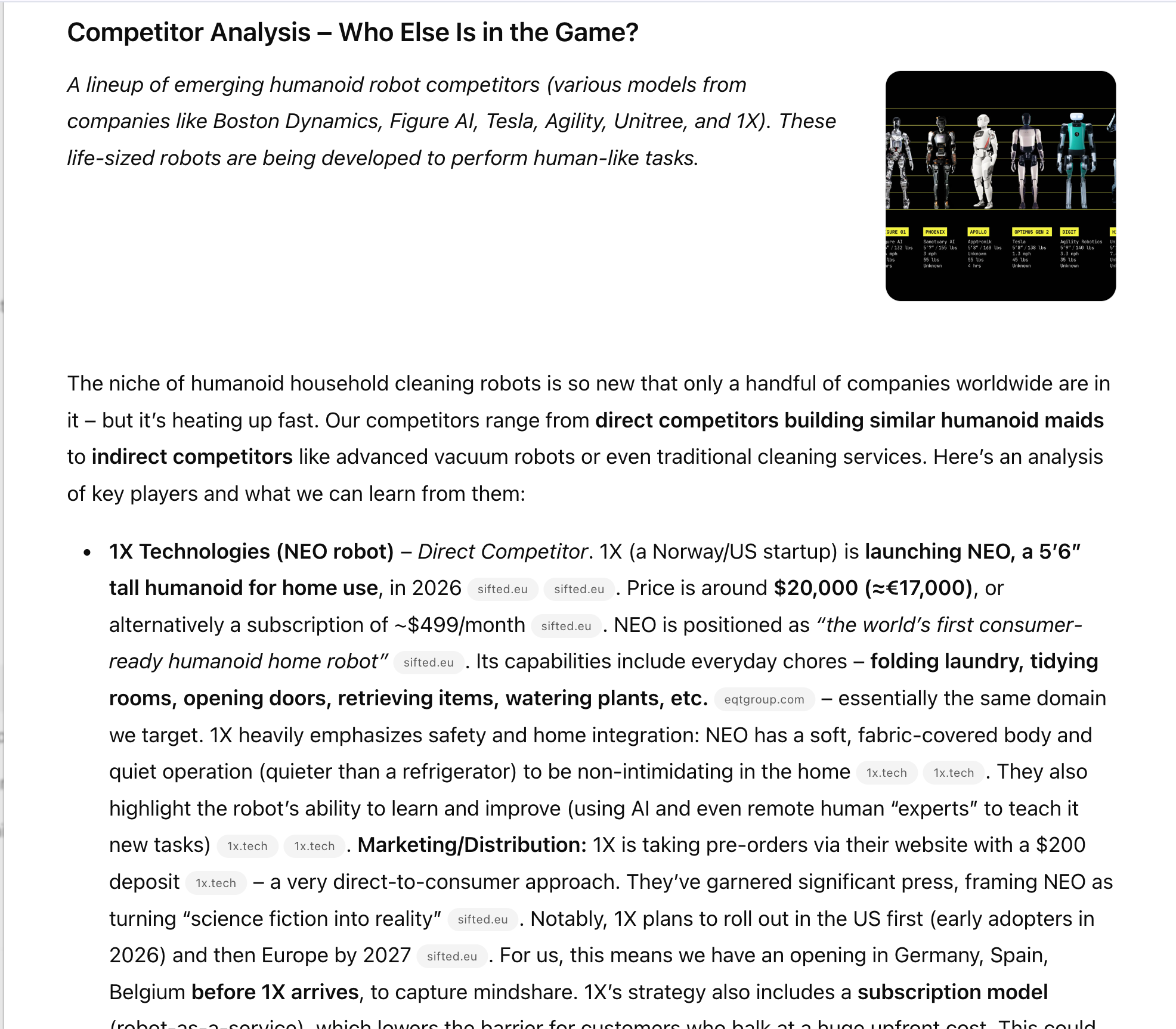
When the research finishes, you get a structured report with clear citations. It can cover things like market trends, ideal customer profiles with real language from users, competitor and pricing insights, and suggestions for positioning, distribution, or partnerships. All sources are listed at the bottom so you can verify everything yourself.
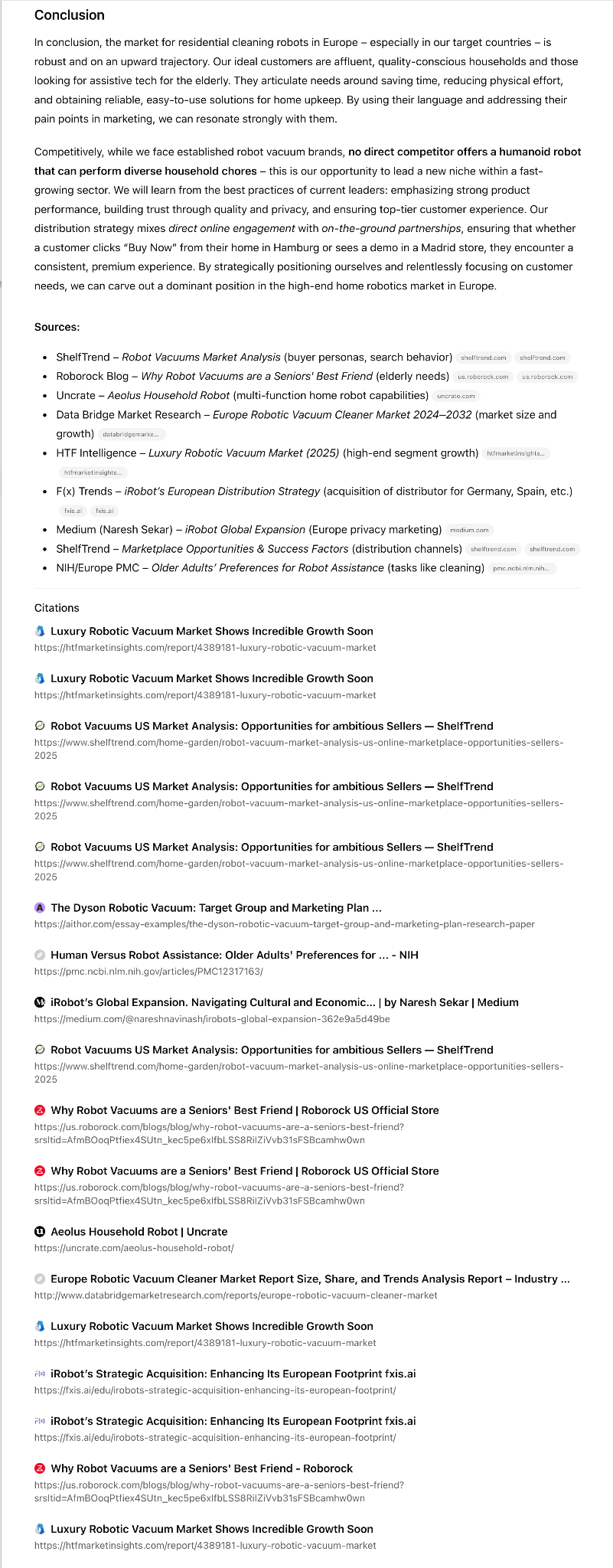
You can download the report as a PDF or grab a shareable link. You can also use the report as part of the setup for a custom GPT tailored to your company.

Step 4 - Advanced use cases of deep research
Deep Research is not just for marketing or strategy. You can use it across almost any team:
Sales can get prospect profiles, funding snapshots, and competitor breakdowns.
Prompt:
Create a quick prospect intelligence brief that gives me a clear profile of the [name of the competitor company], a snapshot of its funding history, and a breakdown of its main competitors with their strengths, weaknesses, and positioning. Make the output structured, practical, and easy for sales to use.
Customer success can surface customer sentiment and early signs of churn from public data.
Prompt:
Act as a customer success intelligence assistant and analyze public data to surface clear signals of customer sentiment and possible early churn risks. Look for patterns in reviews, forums, social posts, product discussions, and news mentions. Summarize the tone, highlight pain points, flag any negative shifts, and point out anything that suggests declining engagement or satisfaction. Make the insights specific, evidence-based, and ready for a customer success manager to act on.
Operations and logistics can map suppliers, spot dependencies, and flag potential global disruptions.
Prompt:
Act as an operations insight partner and build a clear picture of the supply landscape by identifying key suppliers, the links between them, and any dependencies that could create operational pressure. Pull signals from public data, industry chatter, shipping patterns, regulatory news, and geopolitical events to flag anything that could disrupt production or logistics. Show where the chain is vulnerable, highlight weak points that deserve attention, and suggest practical actions an operations lead can take right away.
In every case, you get a complete, verifiable report that replaces hours of manual work and saves a lot of money.
That’s it for this tutorial, deep researchers. Use Deep Research when you need a full, reliable report built from multiple verified sources rather than a fast one-line answer. The more context you give, the better the results. Add clear goals, concrete details, and anything measurable so the model knows exactly what you want.
.avif)
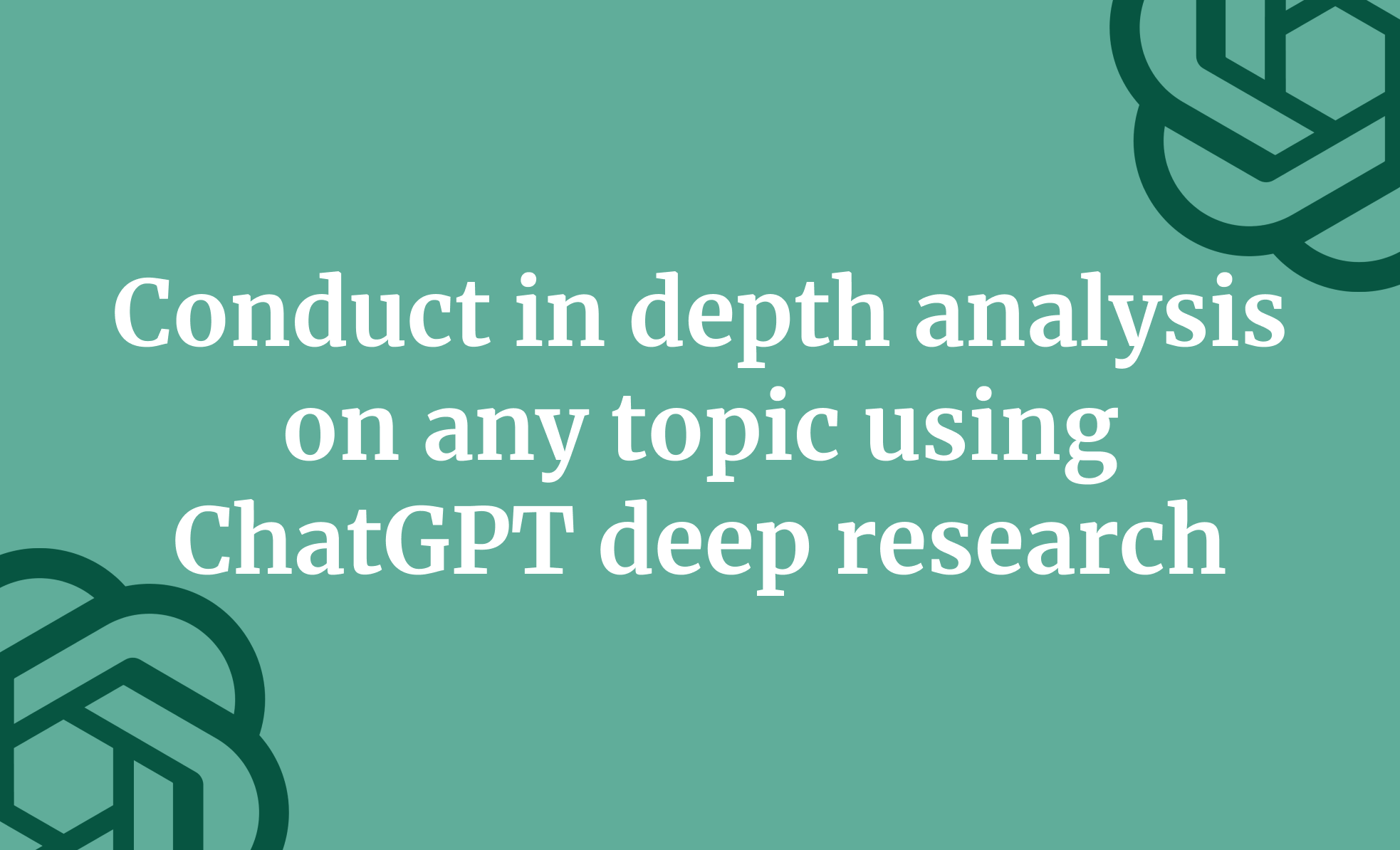
.avif)

.avif)

